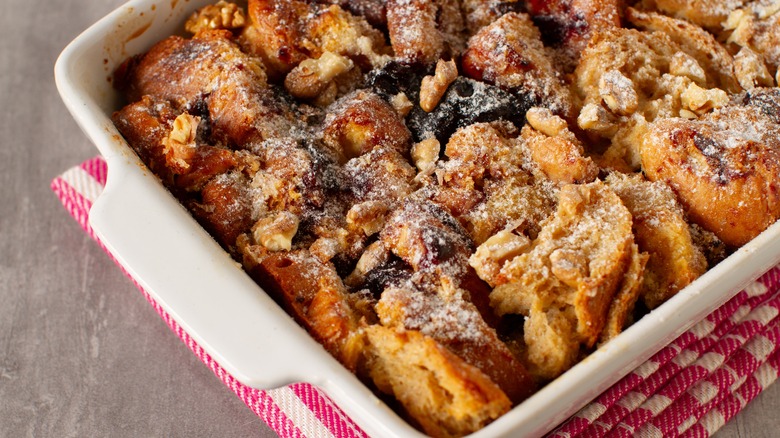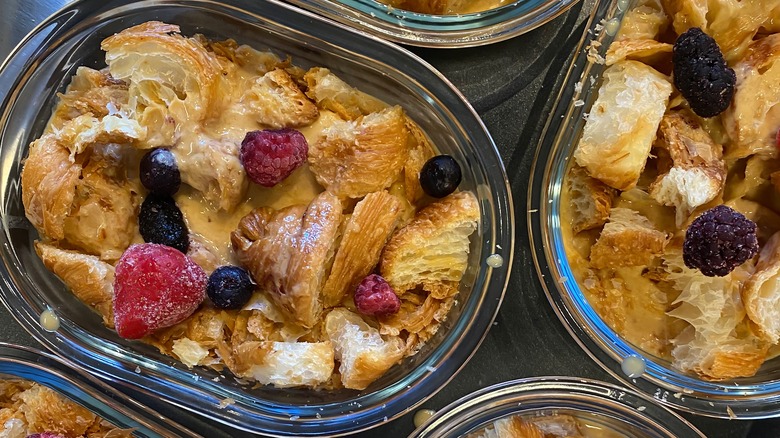The 2 Key Mistakes To Avoid When Making Bread Pudding
Making bread pudding is the perfect way to use up a stale loaf and transform it into an unctuously tender dessert with the simple addition of eggs, sugar, milk, and warming spices. Infused with anything from raisins and nuts to vanilla and chocolate chips, this heavenly dessert is customizable and crave worthy. However, make a couple of rookie errors and you can end up with a sad pudding that's heavy and unappetizingly dry.
To get some expert guidance on what we might be doing wrong when it comes to making a bread pud that's bold with flavor, we spoke to expert Jami Callao, who oversees the pastry and bread programs at Respect Hospitality. "The biggest mistakes," Callao explains, "are not adding enough batter and not soaking the bread long enough. Soak overnight for the best texture."
Pour a custardy batter over shredded pieces of bread and it can look like a sloppy mess at first glance, which is why you might intuitively hold back some of the liquid. Unlike toasted bread, stale bread still has some moisture in it, which means it can take longer for the starch molecules to absorb additional wet ingredients. Leaving your bread pudding in the fridge overnight before baking gives it time to imbibe all the sugary goodness in your batter until its fully soaked. Though it may appear sodden, the wet mixture will firm up in the oven as the custard sets, resulting in a tender pudding that keeps its shape.
Croissants and brioche make a complex butter bread pudding
While sliced bread makes a scrumptious bread pudding, don't feel limited to using a white loaf — anything from leftover croissants and sourdough to chunks of baguette and brioche will work. Better yet, use filled almond croissants or pain au chocolate and you'll create a deluxe dessert with a luxuriously rich center (feel free to elevate your bread pudding by adding the zest of a lemon or a handful of fresh berries to brighten and lift heavier flavors).
The key is to be mindful that some drier and denser-textured breads with thicker crusts, such as rye, may require more custard than your original recipe calls for. In this case, combine your shredded chunks of bread with your egg and milk mixture and check on it an hour or so later to see if all the liquid has been fully absorbed. If the bread isn't saturated, add a dash more custard and leave overnight in the fridge. Conversely, if you're using a softer bread, like a brioche bun, hold some of the custard back to avoid a sloppy textured pudding. Using the correct sized Pyrex baking dish (where the bread fits snugly inside and is fully submerged) will help you to check if the custard has reached the base of the pan.

